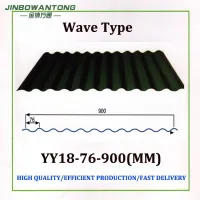A Guide to Different Types of Roofing Sheets
Roofing sheets are a versatile and popular roofing material used in a wide range of construction projects, from residential homes to commercial buildings. They offer durability, affordability, and a variety of design options to suit different architectural styles and preferences. In this guide, we'll explore some of the most common types of roofing sheets available on the market today.
Corrugated roofing sheets feature a distinctive wavy pattern, known as corrugation, which provides strength and rigidity to the sheet. They are typically made from galvanized steel, aluminum, or polycarbonate materials. Corrugated sheets are lightweight, easy to install, and suitable for both pitched and flat roofs. They are commonly used in agricultural buildings, warehouses, and industrial structures.
2. Metal Roofing Sheets
Metal roofing sheets are available in various materials, including steel, aluminum, and copper. They offer excellent durability, weather resistance, and longevity, making them suitable for both residential and commercial applications. Metal roofing sheets come in different profiles, such as standing seam, ribbed, and tile effect, providing versatility in design and aesthetics. They are known for their low maintenance requirements and energy efficiency.

3. Polycarbonate Roofing Sheets
Polycarbonate roofing sheets are lightweight, transparent or translucent sheets made from polycarbonate resin. They are highly durable, impact-resistant, and offer excellent light transmission, making them ideal for applications where natural light is desired, such as conservatories, greenhouses, and skylights. Polycarbonate sheets are available in various colors, thicknesses, and textures to suit different design preferences.
See also:Are Thread Bar Distributors the Future of Construction?
Ultimate Guide to Dia 50mm Threaded Rebar
How much does it cost to build a 12x12 shed?
5 Key Advantages of Drop Forged Couplers for Scaffolding
What is a PC wire?
Do metal roofs get hit by lightning more?
Get to Work Safely: Adjustable Steel Platform
4. Asphalt Roofing Shingles
Asphalt roofing shingles are one of the most popular roofing materials for residential properties. They are made from fiberglass or organic mat saturated with asphalt and coated with mineral granules for added protection against the elements. Asphalt shingles come in a wide range of colors, styles, and textures, including architectural and three-tab designs. They are easy to install, cost-effective, and offer good fire resistance and weather protection.
5. Fiberglass Roofing Sheets
Fiberglass roofing sheets are made from woven fiberglass mat embedded in resin and coated with a protective layer of asphalt or acrylic. They are lightweight, durable, and resistant to corrosion, UV radiation, and chemicals. Fiberglass sheets are available in translucent and opaque varieties, offering versatility in design and light transmission. They are commonly used in industrial, commercial, and agricultural buildings.
Conclusion
Choosing the right type of roofing sheet for your project depends on various factors, including budget, aesthetics, durability, and performance requirements. Whether you're building a new home, renovating an existing structure, or constructing a commercial building, there's a wide range of roofing sheet options available to meet your needs. By considering the characteristics and benefits of each type of roofing sheet, you can make an informed decision and select the best roofing solution for your project.
Ultimate Guide to Threaded Rebar: FAQs Answered
Reviving Tradition: Fish Scale Shingles in Architecture
Are energy efficient prefab homes worth the investment?
How much does 1 ton of rebar cost?
Are stone tiles roofing worth the investment for businesses?
Revolutionizing Thread Bar Usage: Top Tips?
Redefining Sustainability: Is a 100x150 Steel Building the Future of Construction?









